Expert Tips to Maximize Your Self-Defense Training Sessions
When it comes to self-defense training, you want to ensure that every session counts. After all, the goal is not just to learn a few moves but to build a solid foundation that prepares you for real-life scenarios. So, how do you transform your training from basic drills into a comprehensive learning experience? This article provides valuable insights and strategies to enhance your self-defense training. Discover expert tips to improve your skills, boost your confidence, and ensure effective practice for real-life situations.
Establishing specific, measurable goals is crucial for effective training. Think of your self-defense practice like a road trip; without a destination, you might end up lost! Start by defining what you want to achieve. Are you looking to improve your striking techniques, increase your stamina, or perhaps gain confidence in handling confrontational situations? By setting clear objectives, you keep your training focused and purposeful. Consider using the SMART criteria—Specific, Measurable, Achievable, Relevant, and Time-bound—to create your goals. For instance, instead of saying, “I want to get better at self-defense,” you could say, “I want to be able to execute a successful escape technique in a simulated scenario within the next month.”
Selecting a compatible training partner can significantly impact your learning experience. Think of your training partner as your sparring buddy in a dance; if you’re not in sync, the performance won’t shine. Look for someone who shares your commitment to improvement and is willing to challenge you while also being supportive. The ideal partner should have a similar skill level or slightly higher, allowing for mutual growth. Create a productive training environment by establishing ground rules for respect and safety. This way, both of you can push each other to excel without the fear of injury or judgment.
Effective communication with your training partner can enhance your learning. Just like in any relationship, being open about your needs and expectations is vital. Make it a habit to discuss what techniques you want to focus on during each session. This not only sets a clear agenda but also fosters a sense of teamwork. Additionally, giving and receiving constructive feedback is essential. After a drill, take a moment to share what worked well and what could be improved. Remember, feedback isn’t criticism; it’s a tool for growth!
Utilizing active listening techniques can improve understanding and retention of self-defense strategies. Instead of just hearing your partner's words, engage with them. Nod, ask questions, and paraphrase what they say to show you’re truly absorbing the information. This not only clarifies any misunderstandings but also reinforces your learning. For example, if your partner explains a technique, repeat the steps back to them to ensure you're on the same page.
Learning to accept and provide constructive criticism fosters growth. It’s essential to create a supportive feedback culture in your training sessions. Start by setting the tone—encourage each other to speak openly about strengths and areas for improvement. You might say, “I noticed you’re really good at that move, but maybe try to keep your stance lower for better balance.” This approach not only helps you improve but also builds trust between you and your partner.
Training in realistic scenarios prepares you for actual confrontations. Think of it as a dress rehearsal before the big performance; the more you practice under realistic conditions, the more prepared you’ll be when it counts. Integrate scenario-based training into your practice by simulating various attack situations. For example, role-play different scenarios where you might need to defend yourself, such as being approached in a parking lot or dealing with an aggressive individual. This not only enhances your skills but also boosts your confidence in handling unexpected situations.
Physical fitness is vital for self-defense effectiveness. Just like a car needs fuel to run, your body needs strength, endurance, and agility to execute techniques effectively. Focus on key components of fitness, such as strength training, cardiovascular conditioning, and flexibility. A well-rounded fitness routine will not only improve your self-defense skills but also enhance your overall well-being. Remember, the stronger and fitter you are, the more confident you’ll feel in your abilities.
Incorporating strength and conditioning exercises into your routine can enhance your overall capability. Think of these workouts as the foundation of your self-defense house; without a solid base, everything else can crumble. Focus on exercises that build core strength, such as planks and squats, as well as explosive movements like burpees and kettlebell swings. These will help you develop the power and endurance needed for effective self-defense.
Flexibility and agility are crucial for executing techniques effectively. Just like a gymnast needs to be limber, you need to maintain flexibility to avoid injuries and perform maneuvers smoothly. Incorporate stretching routines and agility drills, like ladder drills or cone sprints, into your training. Not only will these exercises improve your physical attributes, but they will also aid in better self-defense performance by allowing you to move swiftly and fluidly.
Consistent review of techniques ensures retention and mastery. Just like a musician practices scales to keep their skills sharp, you need to revisit learned skills regularly to maintain proficiency in self-defense. Schedule time in your training sessions to focus on previously learned techniques, ensuring they remain fresh in your mind and muscle memory.
Drilling essential techniques helps solidify your muscle memory. Consider setting up a structured drill routine where you repeat key moves until they become second nature. For instance, practice your stance, strikes, and defensive maneuvers in a controlled environment. This repetition will make your responses instinctive, allowing you to react swiftly in real situations.
Using video analysis can be a powerful tool for self-assessment. Record your training sessions and review them to identify areas for improvement. Watching yourself in action can reveal things you might not notice in the moment, like poor technique or ineffective movements. This reflective practice allows you to make adjustments and track your progress over time.
Mental preparedness is as important as physical training. Just like a soldier prepares for battle, you need to develop a strong mindset to ensure you are ready for any self-defense situation. Incorporate mental training techniques into your routine, such as visualization and stress management strategies, to enhance your overall readiness.
Visualization can enhance performance by mentally preparing you for confrontations. Picture yourself successfully executing techniques in various scenarios. This mental rehearsal not only boosts your confidence but also helps you familiarize yourself with potential situations. The more vividly you can imagine these scenarios, the better prepared you’ll be when faced with them in real life.
Managing stress is crucial for maintaining focus during training. High-pressure situations can lead to anxiety, which can hinder your performance. Incorporate stress management strategies, such as deep breathing exercises or mindfulness meditation, into your routine. These techniques can help you stay calm and centered, allowing you to perform at your best when it matters most.
Ongoing education is essential for self-defense practitioners. Just like technology evolves, so do self-defense techniques. To stay updated, seek out new knowledge and skills. Attend workshops, join seminars, and engage with online communities to expand your understanding of self-defense.
Participating in workshops and seminars can expand your skill set. These events often feature expert instructors who can introduce you to advanced techniques and concepts. Plus, they provide a unique opportunity to train with individuals from different backgrounds, enriching your learning experience.
Utilizing online resources can enhance your self-defense knowledge. Explore various platforms, such as forums, YouTube channels, and social media groups dedicated to self-defense. These communities offer valuable information, support, and opportunities to connect with fellow practitioners. Remember, learning is a lifelong journey, and the more you engage with others, the more you’ll grow.
- What is the best way to find a training partner? Look for someone in your class or community who shares similar goals and is committed to improving.
- How often should I practice self-defense techniques? Aim for at least two to three times a week to maintain and improve your skills.
- Can I practice self-defense alone? Yes, but it's beneficial to practice with a partner for realistic scenarios and feedback.
- What should I do if I feel overwhelmed during training? Take a break, practice deep breathing, and communicate with your partner about your feelings.

Setting Clear Goals
When it comes to self-defense training, is not just a suggestion; it's a fundamental step that can make or break your progress. Think of it like navigating a ship without a compass. You might have the sails up and the wind in your favor, but without a clear destination, you could end up lost at sea. So, how do you define these goals to ensure your practice is focused and purposeful?
First and foremost, your goals should be specific. Instead of saying, "I want to get better at self-defense," try something like, "I want to master three new techniques in the next month." This level of specificity allows you to measure your progress effectively. You can track your improvement and celebrate small victories along the way, which is crucial for maintaining motivation.
Next, consider making your goals measurable. This means you should be able to quantify your progress. For example, if your goal is to improve your striking speed, you might measure your speed using a timer during drills. By tracking this over time, you’ll see tangible evidence of your improvement, reinforcing your commitment to the training.
Another important aspect is to ensure your goals are achievable. While aiming high is great, setting unattainable goals can lead to frustration and burnout. Reflect on your current skill level and set goals that challenge you but are still within reach. This balance will keep you engaged and eager to learn.
Additionally, don’t forget to make your goals relevant. They should align with your personal motivations for learning self-defense. Are you training for personal safety, competition, or just for fun? Understanding your "why" will help you create goals that resonate with you, making your training sessions more meaningful.
Lastly, set a time frame for your goals. This could be short-term (like weekly or monthly) or long-term (like yearly). Having a deadline creates a sense of urgency and helps you stay accountable. For instance, you might set a goal to complete a specific self-defense course within three months. This not only gives you a timeline but also helps you prioritize your training sessions.
Here’s a quick table summarizing the key elements of effective goal-setting:
| Goal Element | Description |
|---|---|
| Specific | Clearly define what you want to achieve. |
| Measurable | Track your progress with quantifiable metrics. |
| Achievable | Set realistic goals based on your current skill level. |
| Relevant | Ensure goals align with your personal motivations. |
| Time-bound | Set deadlines to create urgency and accountability. |
By focusing on these elements, you’ll create a roadmap for your self-defense training that not only enhances your skills but also boosts your confidence. Remember, the journey of a thousand miles begins with a single step, and with clear goals, you’ll know exactly where to put your foot next!

Choosing the Right Training Partner
When it comes to self-defense training, the importance of selecting the right training partner cannot be overstated. Your training partner can either elevate your learning experience or hinder your progress, so it's essential to choose wisely. Imagine trying to learn how to swim without a lifeguard; it’s not just about the skills, but also about having someone there to support you through the process. A good training partner should be someone who not only shares your passion for self-defense but also complements your learning style and goals.
First and foremost, look for someone who is at a similar skill level to you. Training with someone who is much more advanced can be intimidating and may discourage you, while partnering with someone who is less experienced might not challenge you enough. A balanced partnership fosters a supportive environment where you can both grow and improve. This balance is crucial, as it allows for a dynamic exchange of techniques and insights, pushing each other to enhance your skills.
Another important aspect to consider is the attitude and commitment of your training partner. You want someone who is serious about their training and is willing to put in the effort to improve. A partner who shows up consistently, is punctual, and approaches training with enthusiasm can significantly boost your motivation. Think of your training sessions as a journey; having a reliable companion makes the journey not only more enjoyable but also more productive. A positive attitude can also make a world of difference when it comes to tackling difficult techniques or concepts.
Furthermore, effective communication is key to a successful training partnership. You should feel comfortable discussing your goals, challenges, and progress openly. This communication can lead to constructive feedback, which is vital for improvement. When both partners are willing to share insights and critiques, it creates a culture of growth. As you practice together, make it a habit to check in with each other about what’s working and what’s not. This dialogue can be the difference between stagnation and progress in your training.
In addition to these qualities, consider the physical attributes of your training partner. While it's not necessary for both of you to be in peak physical condition, having a partner who is reasonably fit can make your training sessions more effective. This doesn’t mean you need to find a bodybuilder; rather, look for someone who can keep up with the pace of your training and engage in the physical demands of self-defense practice. The goal is to create a safe training environment where both of you can practice techniques without the risk of injury.
Finally, don't underestimate the importance of trust in your training partnership. Self-defense training often involves practicing techniques that can be physically demanding or even painful. It’s crucial to have a partner you can trust to apply techniques safely and responsibly. This trust allows for a more open exploration of techniques and can lead to a deeper understanding of self-defense principles. When you trust your partner, you’re more likely to push your limits and experiment with new techniques, knowing that they will have your back.
In conclusion, choosing the right training partner is a vital step in maximizing your self-defense training. Look for someone who matches your skill level, shares your commitment, communicates effectively, maintains physical fitness, and, most importantly, earns your trust. With the right partner by your side, you’ll find that your training sessions become not only more productive but also more enjoyable, allowing you to grow and thrive in your self-defense journey.
- What should I look for in a training partner? Seek someone with a similar skill level, a positive attitude, effective communication skills, and trustworthiness.
- Can I train with someone who is less experienced? While it’s possible, it’s important to ensure that you’re still challenged and learning effectively.
- How can I improve communication with my training partner? Make it a habit to discuss your goals, progress, and challenges openly and regularly.
- Is it essential for my training partner to be physically fit? While they don’t need to be in peak condition, having a partner who can keep up with the training is beneficial.
- What if I don’t have a training partner? Consider joining a self-defense class or finding training groups in your area to meet potential partners.
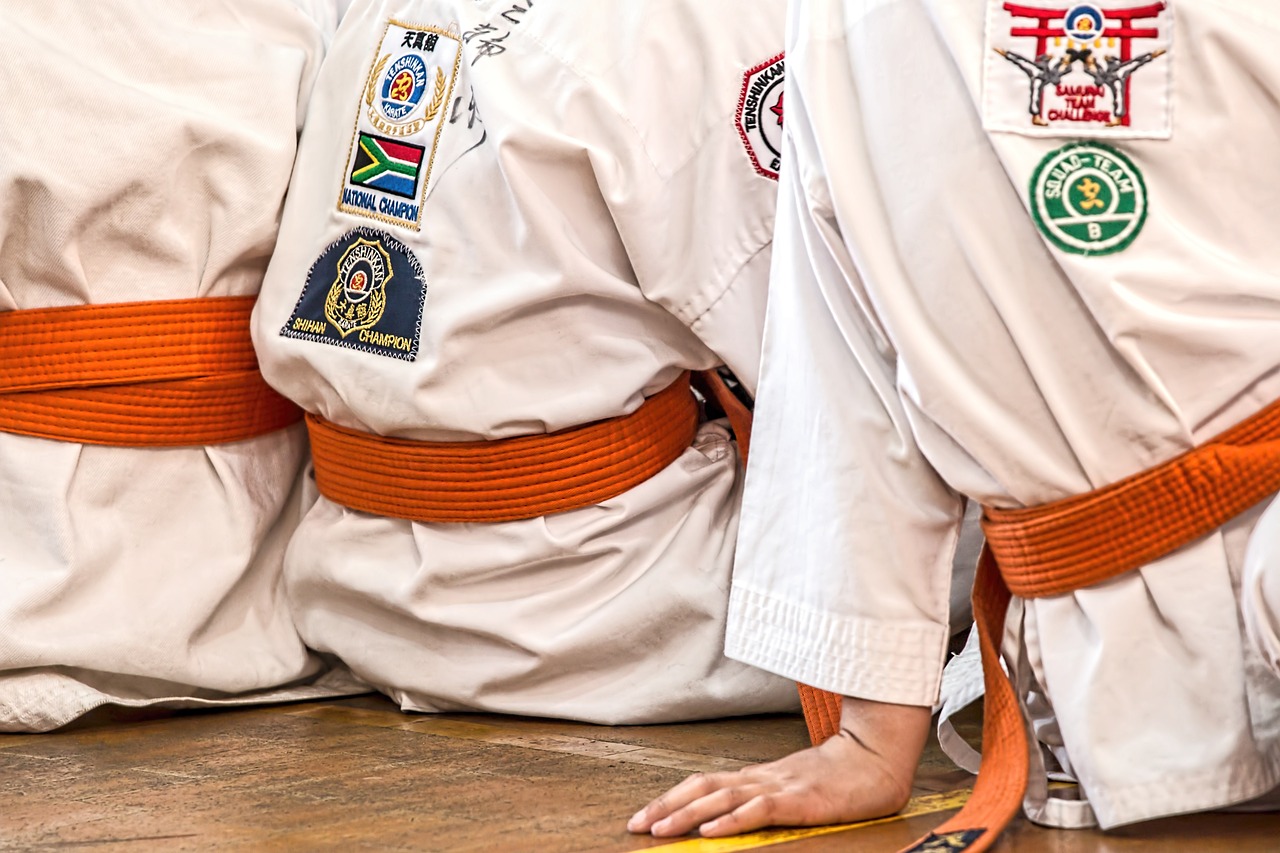
Communication and Feedback
Effective communication and feedback are the cornerstones of successful self-defense training. Imagine you’re in a sparring session, and your partner throws a punch. If you don't communicate your feelings about the technique or the intensity, how can you both improve? The essence of learning lies in understanding, and that requires open dialogue. It's not just about throwing punches and kicks; it’s about sharing insights, experiences, and constructive criticism to elevate each other’s skills.
When training with a partner, consider the following key aspects of communication:
- Clarity: Be clear about what you want to practice. If you're focusing on defense techniques, let your partner know so they can tailor their approach accordingly.
- Constructive Feedback: After each drill, take a moment to discuss what went well and what could be improved. This helps in refining your techniques and understanding each other's perspectives.
- Non-Verbal Cues: Pay attention to body language. Sometimes, a nod or a shrug can convey more than words. Being attuned to your partner’s non-verbal signals can greatly enhance your training experience.
Receiving feedback is just as important as giving it. When your partner critiques your technique, don’t take it personally. Instead, view it as an opportunity for growth. Foster an environment where both partners feel comfortable sharing their thoughts. This mutual respect not only improves skills but also builds a stronger bond between training partners.
Moreover, consider implementing a feedback loop in your training sessions. This can involve:
| Step | Action |
|---|---|
| 1 | Practice a technique together. |
| 2 | Pause and discuss what worked and what didn’t. |
| 3 | Make adjustments based on the feedback. |
| 4 | Reassess and practice again. |
By following this structured approach, you not only enhance your skills but also create a supportive training environment. Remember, the goal is not just to defend yourself but to become a proficient practitioner who can adapt and grow. So, embrace communication and feedback as essential tools in your self-defense arsenal!
Q: How can I ensure my feedback is constructive?
A: Focus on specific behaviors rather than personal attributes, and provide actionable suggestions for improvement.
Q: What if my partner doesn't respond well to feedback?
A: Approach the conversation with empathy. Frame your feedback in a way that emphasizes mutual growth and improvement.
Q: How often should we discuss feedback during training?
A: Ideally, feedback should be integrated into every session, especially after practicing new techniques or sparring.
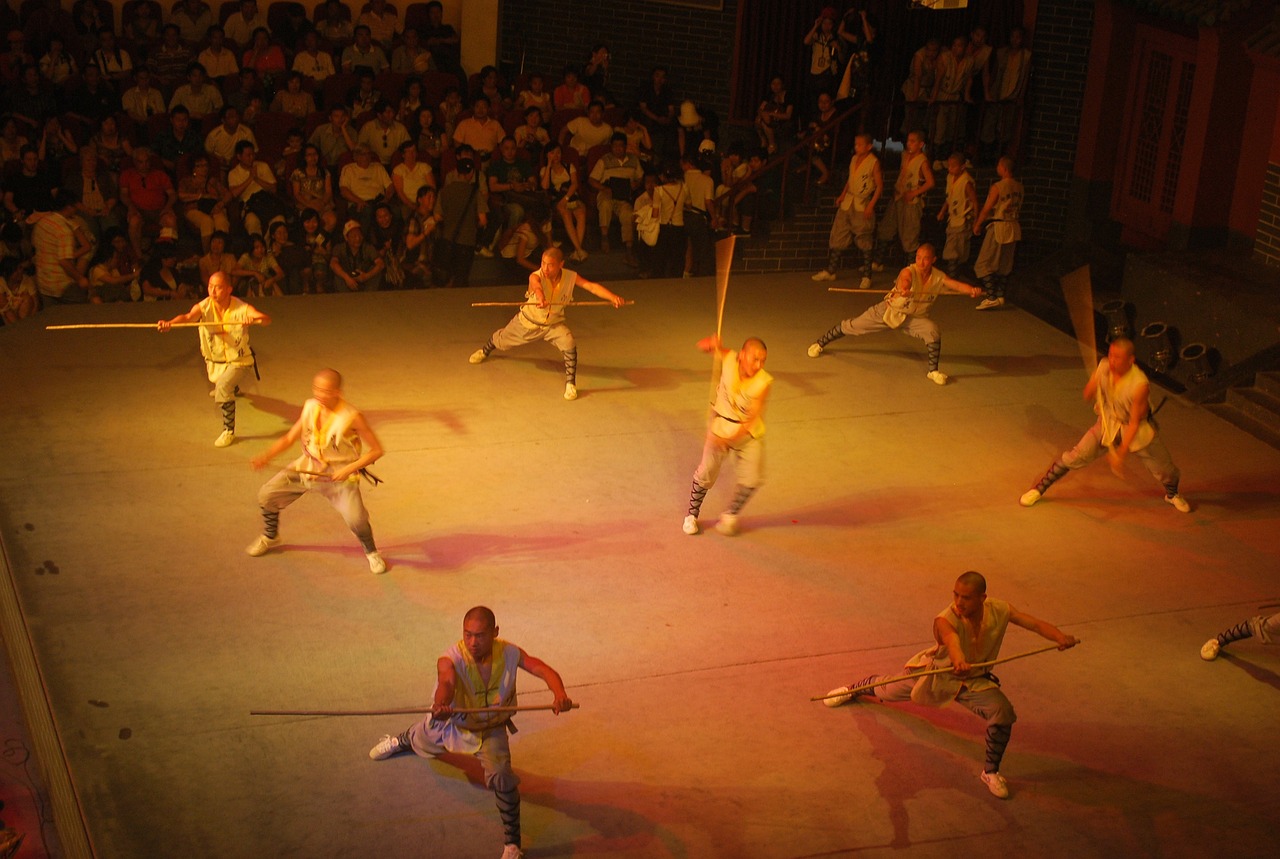
Active Listening Techniques
Active listening is not just about hearing words; it's about fully engaging with your training partner and the information being shared. When practicing self-defense techniques, you want to ensure that both you and your partner are on the same page, which requires a commitment to understanding and responding effectively. One of the key aspects of active listening is maintaining eye contact. This simple act shows your partner that you are focused and interested in what they are saying. Imagine you’re in a conversation where your partner is demonstrating a crucial move. If you’re distracted, you might miss vital details that could enhance your skills.
Another essential technique is to paraphrase what your partner has communicated. For instance, after they explain a technique, try restating it in your own words. This not only confirms your understanding but also encourages a deeper discussion. You might say, “So, what you’re saying is that I should pivot my foot to generate more power in the strike, right?” This method fosters a collaborative learning environment where both parties feel valued and heard.
Additionally, incorporating non-verbal cues can significantly enhance your active listening skills. Nodding your head, using facial expressions, and leaning slightly forward can all signal to your partner that you are engaged. These cues create a supportive atmosphere that encourages open dialogue. Remember, the goal is to build a partnership where both of you can thrive and grow in your self-defense practice.
To further facilitate effective communication, consider the following active listening techniques:
- Ask Open-Ended Questions: Instead of yes/no questions, ask questions that require more detailed responses, encouraging your partner to elaborate on their thoughts.
- Summarize Regularly: After a discussion, summarize the main points to ensure clarity and understanding.
- Be Mindful of Your Body Language: Your non-verbal signals can communicate just as much as your words. Ensure your body language is open and inviting.
Incorporating these active listening techniques into your self-defense training sessions will not only enhance your learning experience but also strengthen the bond between you and your training partner. By fostering an environment of mutual respect and understanding, you can create a more effective and enjoyable training atmosphere.
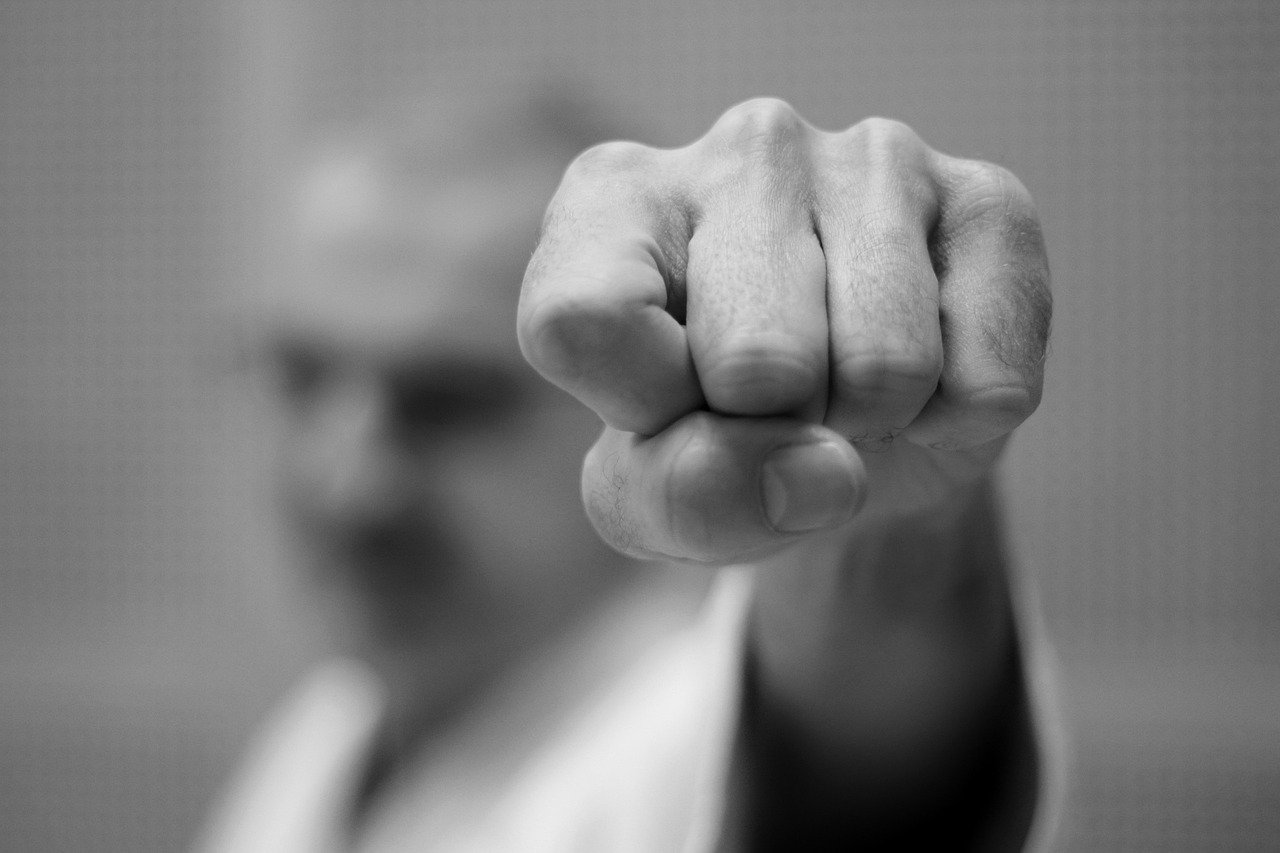
Encouraging Constructive Criticism
When it comes to self-defense training, constructive criticism is like the secret sauce that can elevate your skills to the next level. Imagine you're cooking a gourmet meal; without that pinch of salt, the flavor just doesn't pop! Similarly, feedback from your training partner can help you identify blind spots and areas for improvement that you might not notice on your own. But how do you create an environment where constructive criticism thrives?
First and foremost, it's essential to foster a culture of trust and openness. You want your training partner to feel comfortable sharing their thoughts without fear of judgment. Start by setting clear expectations: let them know that you value their input and are genuinely interested in growing together. This can be as simple as saying, "Hey, I really want to improve my technique. If you see something I can work on, please let me know!"
Next, be specific in your requests for feedback. Instead of asking vague questions like, "How did I do?", try something more targeted: "Did you notice if my stance was balanced during that last drill?" This not only gives your partner a clear direction but also encourages them to think critically about what they observed. Remember, the goal is to enhance your performance, not to critique for the sake of it.
Moreover, when receiving feedback, practice active listening. This means not just hearing the words but truly understanding the message behind them. Nod, maintain eye contact, and ask clarifying questions if needed. For instance, if your partner says, "I think your kicks could be more powerful," you might respond with, "What do you think I could do to generate more power?" This turns the feedback session into a collaborative discussion rather than a one-sided critique.
On the flip side, when providing feedback, aim for a balance between praise and critique. Start with something positive to set a positive tone, then follow up with the area for improvement. For example, you might say, "Your footwork was really impressive! One thing to consider is keeping your hands up during the drill." This approach not only makes it easier for your partner to accept the criticism but also keeps morale high.
Incorporating feedback into your training sessions can be a game-changer. After each practice, take a moment to reflect on the critiques you've received and how you can implement them in your next session. Keeping a training journal can also be beneficial. Write down the feedback you receive and your plans to address it. This not only helps you track your progress but also reinforces the importance of continuous improvement.
In conclusion, encouraging constructive criticism is about creating a supportive environment where both you and your training partner can thrive. By fostering trust, being specific in your requests, practicing active listening, and balancing praise with critique, you can transform your self-defense training into a powerful learning experience. Remember, every piece of feedback is a stepping stone on your journey to mastering self-defense!
- What is constructive criticism?
Constructive criticism is feedback that is intended to help someone improve their skills or performance. It focuses on specific behaviors and offers suggestions for improvement.
- How can I give constructive criticism effectively?
To give constructive criticism effectively, balance your feedback with positive remarks, be specific, and ensure that your tone is supportive rather than judgmental.
- What should I do if I receive negative feedback?
Take a moment to breathe and process the feedback. Consider the points made, ask for clarification if needed, and think about how you can use it to improve your skills.
- Can constructive criticism help in other areas of life?
Absolutely! Constructive criticism can be beneficial in various aspects of life, including work, education, and personal relationships, as it promotes growth and improvement.
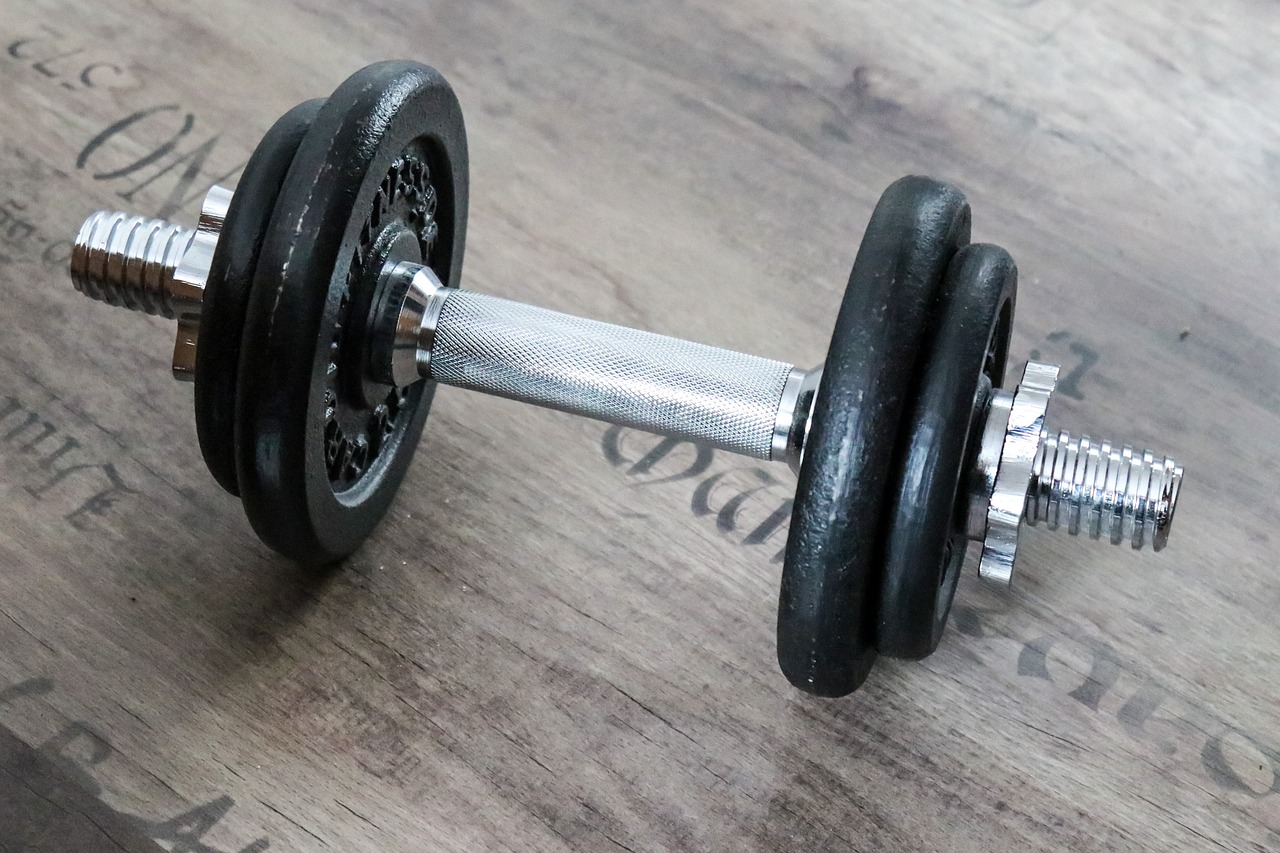
Incorporating Realistic Scenarios
When it comes to self-defense training, one of the most effective ways to prepare for real-life confrontations is by into your practice sessions. Think about it: how often do we find ourselves in controlled environments where everything goes according to plan? Not very often! Life can throw unexpected challenges our way, and training under realistic conditions can help you respond effectively when it matters the most.
To start, you might want to create scenarios that mimic potential situations you could face. This could include everything from a sudden attack on the street to a confrontation in a crowded area. By simulating these kinds of situations, you can develop the ability to think on your feet and react swiftly. You can set up a few different scenarios, such as:
- A surprise attack from behind
- Defending yourself against multiple attackers
- Escaping from a hold or grip
- Dealing with an aggressive individual in a public setting
Each of these scenarios can be tailored to your skill level and comfort zone. Start with a partner who understands the importance of safety and realism in training. It’s crucial to establish a safe environment where both of you can push each other’s limits while minimizing the risk of injury.
Moreover, consider adding elements to your training that increase the level of realism. For instance, you could wear protective gear or use training weapons to simulate a more authentic experience. This not only helps with the physicality of the training but also aids in building your mental resilience. The more you expose yourself to these real-life situations, the better prepared you will be.
Another key aspect is to incorporate stressors into your training. Stressors can include loud noises, time constraints, or even the presence of bystanders. These factors can significantly affect your performance under pressure, so practicing with them in mind can be incredibly beneficial. For example, you might have a friend yell distractions or set a timer to create a sense of urgency during your drills.
Finally, after each scenario, take the time to debrief and discuss what went well and what could be improved. This reflection will not only help solidify your learning but also encourage a culture of growth and support within your training environment. Remember, the goal is to learn and adapt, so embrace the feedback.
In summary, incorporating realistic scenarios into your self-defense training is a game-changer. It prepares you for the unpredictability of real-life situations, builds your confidence, and sharpens your skills. So, the next time you step onto the mat or into the gym, think about how you can make your practice as realistic as possible. Your future self will thank you!
- What types of realistic scenarios should I practice? Focus on scenarios that mimic potential threats you might encounter in real life, such as street attacks or confrontations in public places.
- How can I ensure safety while practicing realistic scenarios? Always use protective gear and establish clear communication with your training partner to minimize the risk of injury.
- Should I include stressors in my training? Yes! Incorporating stressors like loud noises or time constraints can help you prepare for the pressure of real-life situations.
- How often should I incorporate realistic scenarios into my training? Aim to include them regularly, perhaps once a week, to ensure you’re consistently building your skills and confidence.

Maintaining Physical Fitness
When it comes to self-defense, one of the most critical components to focus on is physical fitness. Why? Because your body is your first line of defense! Just like a well-oiled machine, the more you maintain and strengthen it, the better it performs under pressure. Think of physical fitness as the foundation of a sturdy house; without it, everything else can crumble under stress. To really maximize your self-defense training, you must ensure that you’re not only practicing techniques but also building the physical capabilities to execute them effectively.
There are several key components of fitness that you should concentrate on to achieve optimal performance during your training sessions. These include strength, endurance, flexibility, and agility. Each of these elements plays a vital role in how well you can defend yourself when the situation calls for it. For instance, having strong muscles can help you overpower an opponent, while flexibility allows you to evade attacks more easily. So, let’s dive deeper into these components and how you can incorporate them into your routine.
Strength and Conditioning exercises are essential for building the muscle power needed in self-defense scenarios. You can engage in various workouts such as weight lifting, bodyweight exercises, and resistance training. Aim for a balanced routine that targets all major muscle groups. For example, consider a weekly schedule like this:
| Day | Workout Focus |
|---|---|
| Monday | Upper Body Strength |
| Wednesday | Lower Body Strength |
| Friday | Full Body Conditioning |
In addition to strength training, don’t underestimate the importance of flexibility and agility. These attributes are crucial for executing self-defense techniques efficiently. Incorporating activities like yoga or Pilates can greatly enhance your flexibility. Agility drills, such as ladder drills or cone sprints, can improve your quickness and reaction time, which are essential in self-defense situations.
Finally, remember that maintaining physical fitness is not just about hitting the gym. It’s also about integrating healthy habits into your daily life. Simple actions like taking the stairs instead of the elevator, going for a brisk walk during your lunch break, or even practicing self-defense moves at home can keep you in shape and ready for anything. So, the next time you think about skipping your workout, remember that every little bit counts towards your overall preparedness!
- How often should I train to maintain physical fitness for self-defense? Ideally, aim for at least three to five workouts per week, mixing strength, cardio, and flexibility training.
- Can I do self-defense training at home? Absolutely! Many self-defense techniques can be practiced at home, and you can use online resources to guide your training.
- What should I eat to support my training? Focus on a balanced diet rich in protein, healthy fats, and complex carbohydrates to fuel your workouts and recovery.
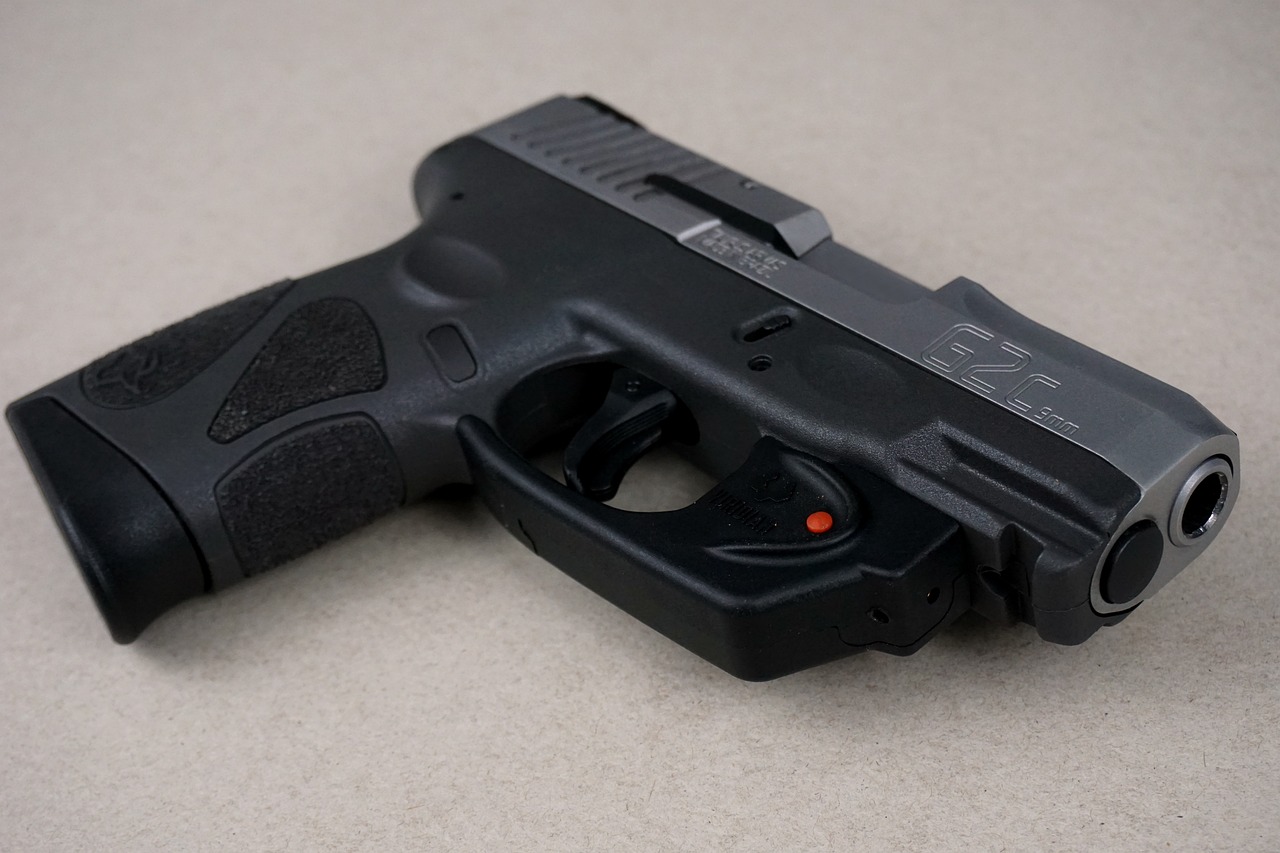
Strength and Conditioning Exercises
When it comes to self-defense, are not just an option; they are a necessity. Think of your body as a finely tuned machine. Just like a car needs regular maintenance to run smoothly, your body requires consistent strength training to perform optimally in a self-defense situation. Building strength enhances your ability to execute techniques effectively, while conditioning ensures that you can maintain your energy levels during a confrontation.
One of the best ways to incorporate strength and conditioning into your routine is through a mix of resistance training and cardiovascular workouts. Resistance training can include exercises such as squats, push-ups, and kettlebell swings, which not only build muscle but also improve functional strength. For example, performing squats will enhance your leg strength, which is crucial for maintaining balance and executing powerful kicks.
On the other hand, conditioning exercises, like running, jumping rope, or high-intensity interval training (HIIT), help improve your stamina and agility. This combination is vital because self-defense situations can be unpredictable and physically demanding. The goal is to ensure that you can react quickly and effectively, regardless of the scenario.
To give you a clearer picture, here’s a simple weekly plan that incorporates both strength and conditioning:
| Day | Strength Training | Conditioning |
|---|---|---|
| Monday | Squats, Push-Ups, Plank | 30 minutes of jogging |
| Wednesday | Deadlifts, Lunges, Bench Press | 20 minutes of HIIT |
| Friday | Kettlebell Swings, Pull-Ups, Core Work | Jump Rope for 15 minutes |
Incorporating these exercises into your weekly routine will not only improve your physical capabilities but also boost your confidence in your self-defense skills. Remember, the stronger and fitter you are, the more effectively you can defend yourself. So, challenge yourself, stay consistent, and watch your skills grow!
Now, you might be wondering, “How do I know if I’m making progress?” That’s a great question! Keeping track of your workouts, noting improvements in your strength levels, and measuring your endurance can provide valuable insights into your progress. It’s also beneficial to set measurable goals for yourself, such as increasing the number of push-ups you can do or improving your mile time. This way, you’ll have tangible evidence of your hard work paying off.
In conclusion, strength and conditioning are integral components of effective self-defense training. By dedicating time to these areas, you not only prepare your body for physical confrontations but also cultivate a mindset geared towards resilience and adaptability. So lace up those sneakers, grab some weights, and get to work!
- How often should I do strength and conditioning exercises? Aim for at least three times a week, balancing both strength and conditioning workouts.
- Can I do strength training at home? Absolutely! Many effective exercises require little to no equipment, such as bodyweight exercises.
- What if I have no prior experience with strength training? Start with basic movements and gradually increase the intensity as you become more comfortable.
- Is it necessary to have a gym membership? Not at all! You can achieve great results with home workouts or outdoor exercises.

Flexibility and Agility Training
When it comes to self-defense, flexibility and agility are not just nice-to-haves; they are absolutely essential. Imagine trying to escape a tight situation with stiff muscles and slow reflexes. It’s like trying to run in quicksand! To truly excel in self-defense, you need to incorporate flexibility and agility training into your routine. This training helps you execute techniques effectively and respond quickly to unexpected movements from an opponent.
Flexibility allows your body to move through a full range of motion, which is crucial when performing techniques that require bending, twisting, or stretching. On the other hand, agility helps you change direction swiftly and maintain balance, which can be the difference between dodging an attack and getting caught off guard. Together, they create a powerful combination that enhances your overall self-defense capabilities.
To effectively improve your flexibility, consider incorporating the following practices into your training:
- Dynamic Stretching: This involves moving parts of your body through their full range of motion, which helps warm up your muscles and improve flexibility. Think of it as getting your body ready to dance before hitting the floor!
- Static Stretching: After your training session, take time to hold stretches that target key muscle groups. This helps lengthen muscles and improve overall flexibility. It’s like giving your muscles a nice, relaxing hug!
- Yoga or Pilates: These practices not only enhance flexibility but also improve core strength and balance. They teach your body to move fluidly, which is essential in self-defense scenarios.
Agility training can be equally fun and beneficial. Here are a few exercises you can try:
- Ladder Drills: Set up an agility ladder on the ground and practice various footwork patterns. This will help improve your foot speed and coordination.
- Cone Drills: Arrange cones in a pattern and practice sprinting to each one, changing directions quickly. This mimics real-life scenarios where you might need to dodge or evade an attacker.
- Jump Rope: Not only does this improve cardiovascular fitness, but it also enhances coordination and foot speed. Plus, it’s a great way to relieve stress!
Integrating these flexibility and agility exercises into your self-defense training routine will not only improve your performance but also boost your confidence. Remember, the more comfortable you feel moving your body, the more effective you will be in a self-defense situation. So, next time you hit the mat, don’t skip the stretching and agility drills. Your body will thank you, and you’ll be ready to tackle any challenge that comes your way!
Q: How often should I train for flexibility and agility?
A: Aim for at least 2-3 times a week. Consistency is key to seeing improvements!
Q: Can I do flexibility and agility training at home?
A: Absolutely! Many exercises can be done with minimal equipment, making it easy to fit into your home workout routine.
Q: Are there specific stretches that are best for self-defense?
A: Focus on stretches that target your hips, legs, and back, as these areas are often used in self-defense techniques.
Q: How long should I hold each stretch?
A: Aim to hold static stretches for about 15-30 seconds to effectively improve flexibility.
Q: Is agility training suitable for all fitness levels?
A: Yes! You can modify agility drills to match your current fitness level and gradually increase the intensity as you improve.
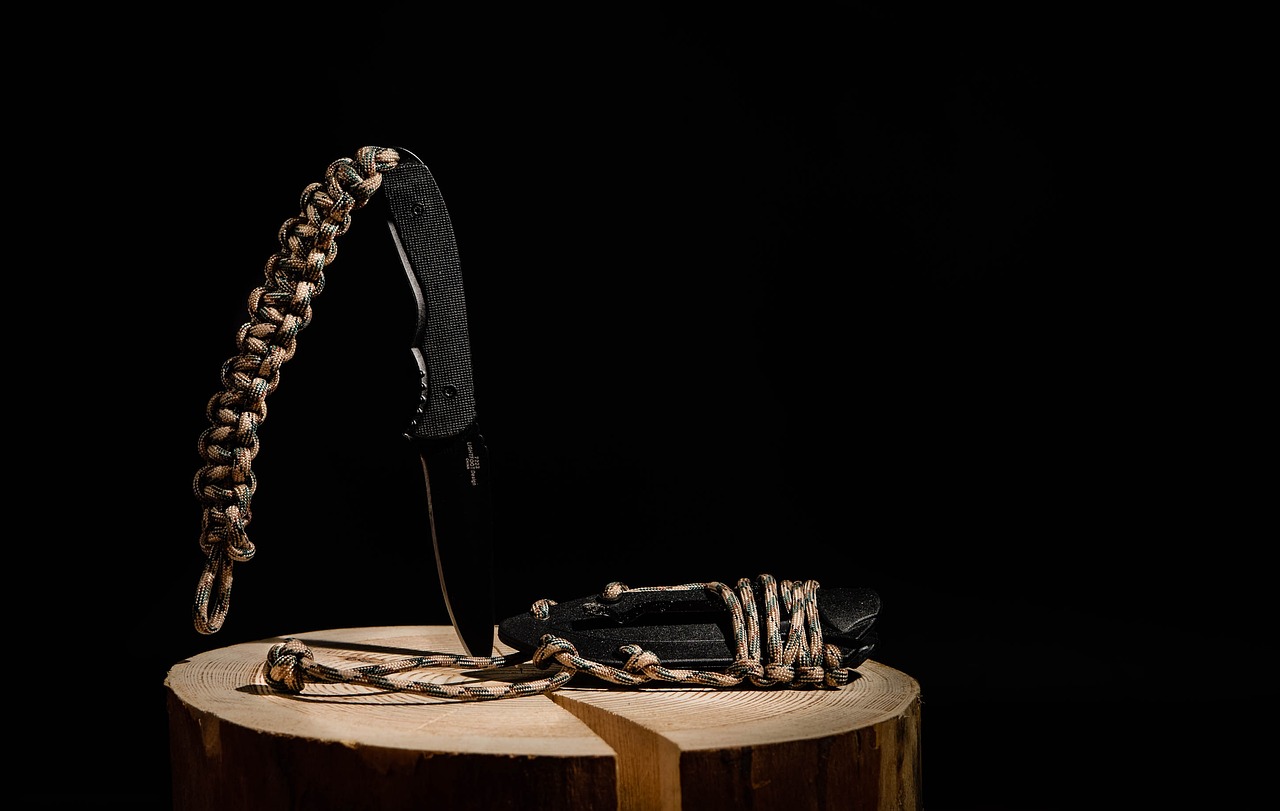
Regularly Reviewing Techniques
When it comes to mastering self-defense, one of the most critical aspects is the regular review of techniques. Just like a musician practices scales or an athlete drills their plays, you must consistently revisit the skills you've learned to ensure they are firmly embedded in your muscle memory. Think of it as sharpening a knife; without regular honing, even the sharpest blade can become dull over time. By integrating a structured review process into your training, you enhance retention and ensure that your responses become instinctual in high-pressure situations.
One effective way to review techniques is through drilling key movements. This means breaking down each technique into manageable parts and practicing them repeatedly until they become second nature. For instance, if you're learning a new escape maneuver, focus on the individual components—body positioning, footwork, and timing—before combining them into the full technique. This not only solidifies your understanding but also allows you to identify any weaknesses in your execution.
Additionally, consider using video analysis as a powerful tool for self-assessment. Recording your practice sessions can provide invaluable insights into your performance. Watching yourself in action allows you to spot mistakes that you might not notice in the heat of practice. You can analyze your form, timing, and overall execution. Create a simple table to track your progress and areas that need improvement:
| Date | Technique Reviewed | Strengths | Areas for Improvement |
|---|---|---|---|
| 2023-10-01 | Escape from Wrist Grab | Good body positioning | Need to work on foot placement |
| 2023-10-08 | Basic Punch Defense | Quick reaction time | Improve follow-up techniques |
By regularly updating this table, you can visualize your progress and stay motivated. Moreover, don't overlook the importance of partner drills. Practicing with a partner not only helps you refine your techniques but also allows for real-time feedback. When you work together, you can simulate various scenarios that can enhance your adaptability and responsiveness. Remember, the goal is not just to memorize techniques but to understand how they apply in different situations.
In conclusion, regularly reviewing your self-defense techniques is essential for building confidence and proficiency. Incorporating structured drills, utilizing video analysis, and engaging in partner exercises creates a comprehensive training environment. So, make it a habit to revisit your skills often, and you'll find that your abilities will not only improve but also become instinctual when it matters most.
- How often should I review my self-defense techniques? Aim to review techniques at least once a week, incorporating drills and video analysis into your routine.
- Can I practice self-defense techniques alone? While practicing alone is beneficial, working with a partner can provide essential feedback and simulate real-life scenarios.
- What should I focus on during my review sessions? Focus on key movements, timing, and overall execution. Use video analysis to identify areas for improvement.
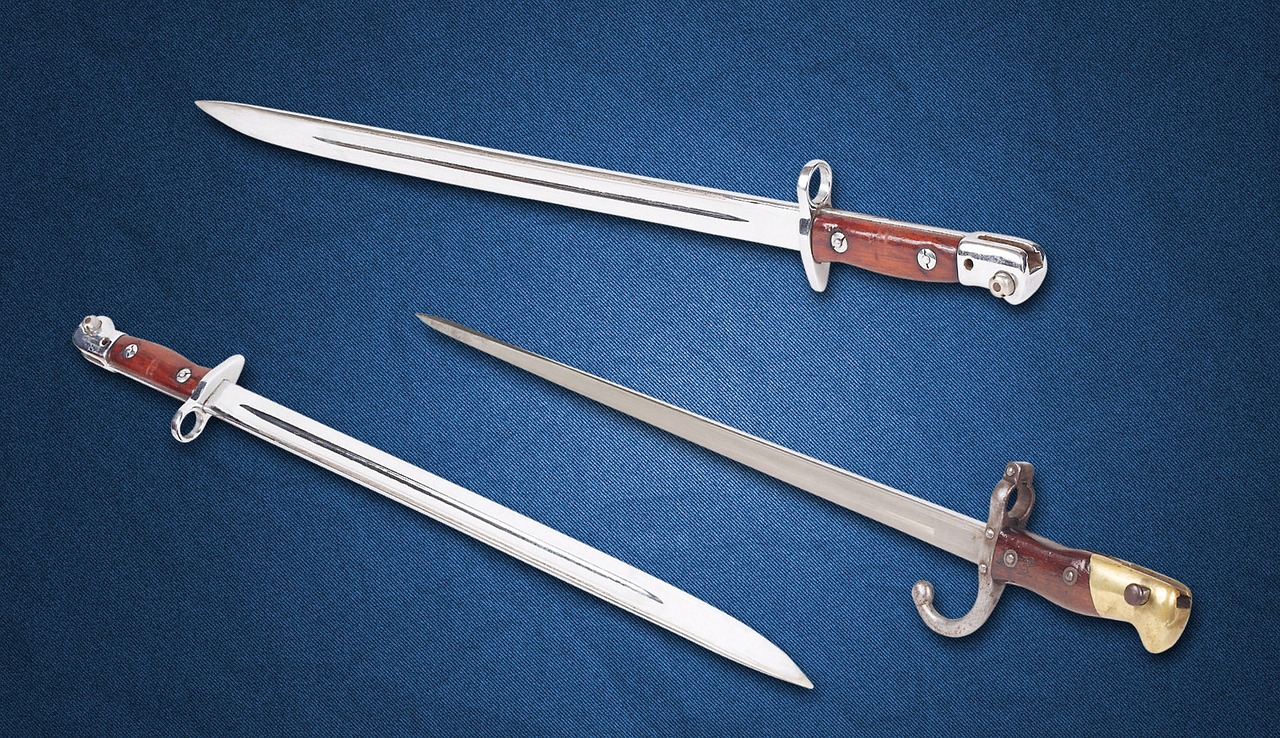
Drilling Key Techniques
When it comes to mastering self-defense, is not just beneficial; it’s essential. Think of it like learning to ride a bike. The first time you get on, you might wobble, but with practice, you gain balance and confidence. Similarly, drilling allows you to internalize moves until they become second nature. The goal is to make your responses automatic, so when faced with a real-life situation, you don’t have to think about what to do—you just do it.
To get the most out of your drilling sessions, focus on a few crucial techniques that are relevant to your self-defense training. These could include basic strikes, escapes from holds, or defensive maneuvers. The key is to repetition. Repeating these techniques consistently helps solidify your muscle memory, making your movements fluid and instinctive. Consider setting aside time in each training session specifically for drilling. You might want to dedicate 15-20 minutes to this practice, ensuring that you’re not just going through the motions but actively refining your technique.
One effective method is to break down each technique into smaller, manageable components. For instance, if you’re practicing a punch, focus on your stance, the movement of your arm, and the follow-through separately before combining them. This approach allows you to understand the mechanics of each move better and address any flaws in your execution. As you improve, gradually increase the speed and intensity of your drills. This will help simulate real-life scenarios where you need to react quickly and decisively.
Additionally, it’s beneficial to incorporate partner drills into your practice. When you have someone to train with, you can practice techniques in a more dynamic environment. This not only helps you understand how to apply techniques against an opponent but also gives you the chance to receive immediate feedback. After each drill, take a moment to discuss what worked well and what could be improved. This conversation can significantly enhance your learning experience.
To keep your drilling sessions engaging, consider varying your practice routine. You might want to rotate through different techniques each week or even introduce new ones as you progress. By doing this, you’re not only preventing boredom but also ensuring that you’re developing a well-rounded skill set. Remember, the goal is to be prepared for any situation, so diversity in your training is key.
Lastly, don’t underestimate the power of self-assessment. After each drilling session, take a few minutes to reflect on what you learned. Ask yourself questions like:
- What techniques felt comfortable?
- Where did I struggle?
- How can I improve for next time?
By regularly evaluating your performance, you’ll be able to track your progress over time and identify areas that need more focus. Remember, self-defense is not just about physical ability; it’s about mental preparedness and continuous improvement. So, get out there, drill those key techniques, and watch your confidence soar!
Q: How often should I drill key techniques?
A: Ideally, you should incorporate drilling into every training session, dedicating specific time to focus on key techniques.
Q: Can I drill techniques alone?
A: Yes, you can practice solo drills, but partnering with someone can enhance the experience and provide valuable feedback.
Q: What if I forget the techniques during a real situation?
A: This is normal! The more you drill, the more instinctual your responses will become. Regular practice helps build muscle memory.
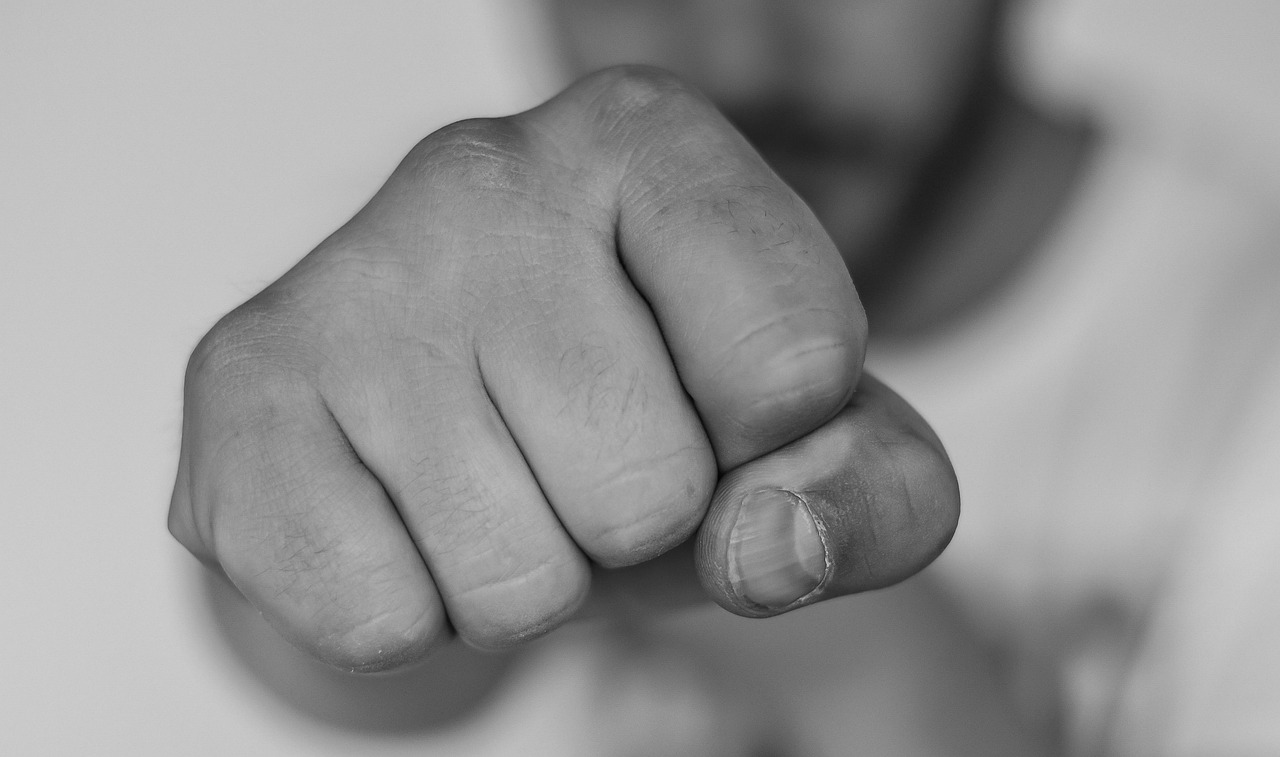
Video Analysis for Improvement
In the world of self-defense training, the adage "practice makes perfect" often rings true, but what if you could take that practice a step further? Enter video analysis, a powerful tool that can revolutionize the way you assess your skills and techniques. By recording your training sessions, you can gain invaluable insights into your performance that may not be apparent in the heat of the moment. Imagine watching yourself execute a technique and then realizing you could tweak your stance or improve your timing just by seeing it from a different perspective.
Video analysis allows you to break down your movements frame by frame, giving you the opportunity to identify both strengths and weaknesses. When you review your footage, consider focusing on the following aspects:
- Technique Execution: Are you performing the moves as taught? Look for any deviations from the correct form.
- Footwork: Is your foot placement effective for balance and power? Poor footwork can undermine even the best techniques.
- Reaction Time: Are you responding quickly enough to simulated attacks? This is crucial in real-life scenarios.
- Body Language: What does your posture convey? Confidence can often deter potential threats.
To maximize the benefits of video analysis, here are some practical steps you can take:
- Record Regularly: Make it a habit to record your training sessions. The more footage you have, the better your analysis will be.
- Set Specific Goals: Before reviewing your videos, determine what you want to focus on. This could range from perfecting a particular technique to improving your overall sparring performance.
- Seek Feedback: Share your videos with a trusted instructor or training partner. They can provide an outside perspective that you might not have considered.
- Track Progress: Keep a log of your video reviews and note improvements over time. This will not only motivate you but also highlight areas that still need work.
By integrating video analysis into your self-defense training, you’re not just practicing; you’re actively engaging in a feedback loop that promotes continuous improvement. It’s like having a personal coach available 24/7, right in your living room!
Q: How often should I record my training sessions?
A: Aim to record at least once a week. This frequency allows you to track your progress effectively without overwhelming yourself.
Q: Do I need special equipment to record my sessions?
A: No, a smartphone or a basic camera will suffice. Just ensure that the angle captures your full movement.
Q: How long should the videos be?
A: Shorter videos (5-10 minutes) focusing on specific techniques or sparring sessions are often more effective for analysis than longer recordings.
Q: Can I use video analysis for other types of training?
A: Absolutely! Video analysis can be beneficial in various sports and physical activities, helping athletes refine their skills.
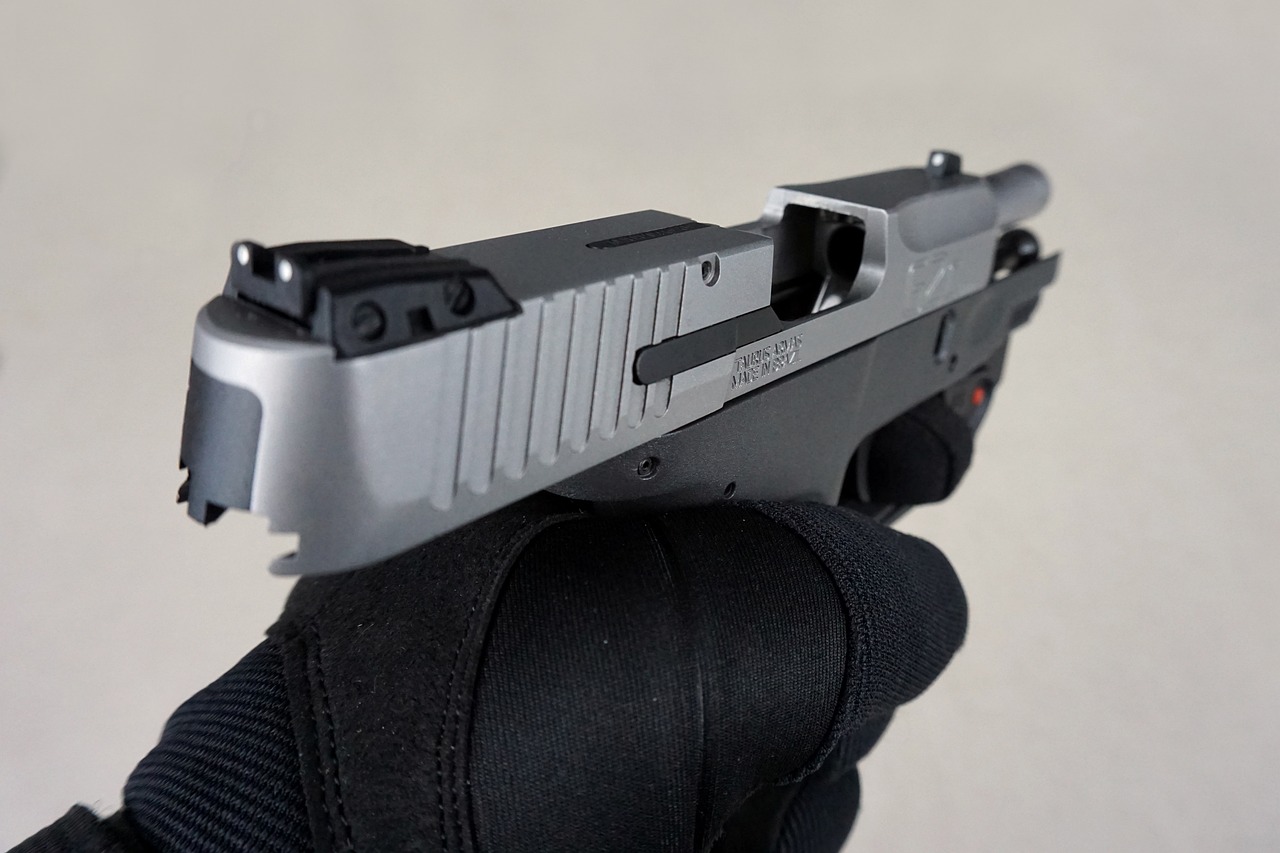
Staying Mentally Prepared
When it comes to self-defense, physical prowess is only half the battle; the other half lies in your mental preparedness. Imagine being in a high-pressure situation where your heart is racing, and your mind is foggy. Wouldn't it be great to have a clear strategy to tackle that? This is where mental training comes into play. Just like you practice your kicks and punches, you must also train your mind to stay sharp and focused. Here are some critical aspects to consider for staying mentally prepared.
One effective technique for mental preparedness is visualization. This involves imagining yourself in various self-defense scenarios, picturing how you would react and what techniques you would employ. Visualization not only enhances your confidence but also prepares your brain to respond more effectively in real situations. You can practice this by setting aside a few minutes each day to close your eyes and visualize yourself successfully navigating through potential confrontations. Think of it as a mental rehearsal; the more you practice in your mind, the more instinctive your reactions will be when it counts.
Another crucial element is stress management. Training can be intense, and if you let stress build up, it can cloud your judgment and slow your reflexes. Techniques such as deep breathing, meditation, or even yoga can help you manage anxiety and keep your mind clear. For instance, when you feel the tension rising, take a moment to breathe deeply. Inhale for four counts, hold for four, and exhale for four. This method can quickly calm your nerves and refocus your mind. You might be surprised at how effective this simple practice can be in improving your overall performance.
To further enhance your mental readiness, consider incorporating the following strategies into your training routine:
- Mindfulness Meditation: Spend a few minutes each day simply being aware of your thoughts and feelings without judgment. This practice can help you stay present and focused during training.
- Positive Affirmations: Use positive self-talk to boost your confidence. Phrases like "I am strong" or "I can handle this" can change your mindset and improve your performance.
- Scenario-Based Training: Whenever possible, practice self-defense techniques in real-life scenarios. This not only builds your confidence but also helps you become accustomed to making quick decisions under pressure.
Finally, remember that mental preparedness is a journey, not a destination. Regularly assess your mental state and adapt your strategies as needed. Just like your physical training evolves, so should your mental training. Keep pushing your boundaries, and you'll find that both your confidence and your skills will grow exponentially.
Q: How can visualization improve my self-defense skills?
A: Visualization helps create mental pathways that prepare your brain for real-life situations, allowing for quicker and more instinctive reactions.
Q: What are some quick stress management techniques I can use during training?
A: Techniques such as deep breathing, mindfulness meditation, and positive affirmations can help you manage stress effectively.
Q: How often should I practice mental preparedness techniques?
A: Aim to incorporate mental training into your routine daily, even if it's just for a few minutes. Consistency is key!

Visualization Techniques
Visualization techniques are a powerful tool in the arsenal of any self-defense practitioner. Imagine stepping onto the mat or into a training session, and instead of just going through the motions, you mentally project yourself into various scenarios. This mental rehearsal can significantly enhance your performance when it matters most. By vividly imagining yourself executing techniques, overcoming obstacles, or even facing an opponent, you prepare your mind and body for real-life situations.
To get started with visualization, find a quiet place where you can focus without distractions. Close your eyes and take a few deep breaths to center yourself. Then, picture a specific self-defense scenario. For example, you might visualize yourself defending against an attacker in a parking lot. Feel the adrenaline, hear the sounds around you, and see the environment as clearly as possible. This immersive experience helps to reinforce your training and build confidence.
Here are some effective visualization techniques to incorporate into your self-defense training:
- Detailed Imagery: The more details you include in your visualization, the more effective it will be. Imagine the colors, sounds, and even the smells of the environment.
- Positive Outcomes: Always visualize yourself succeeding. Picture how you will feel after effectively defending yourself—this positive reinforcement can boost your confidence.
- Multiple Scenarios: Don’t just stick to one scenario. Visualize different situations and responses. This variety prepares you for unexpected encounters.
Incorporating these techniques into your routine can yield impressive results. Research shows that athletes who use visualization often perform better than those who do not. This is because mental practice can enhance muscle memory and improve reaction times. By regularly visualizing your techniques and responses, you are essentially training your brain to react instinctively in high-pressure situations.
Moreover, consider pairing visualization with physical practice. After a training session, take a moment to mentally review what you learned. Visualize yourself executing the techniques flawlessly. This combination of mental and physical practice solidifies your skills and prepares you for real-life applications.
Finally, don't forget to keep a journal of your visualization experiences. Writing down what you visualized and how you felt can help track your progress and highlight areas that need more focus. This reflection not only reinforces your learning but also provides a valuable resource for future training sessions.
Q: How often should I practice visualization techniques?
A: Ideally, you should incorporate visualization into your training routine several times a week. Even a few minutes of focused visualization can be beneficial.
Q: Can visualization replace physical training?
A: While visualization is a powerful tool, it should complement, not replace, physical training. Both are essential for effective self-defense preparation.
Q: What if I struggle to visualize clearly?
A: Start with simpler scenarios and gradually build up to more complex ones. It’s perfectly normal to find visualization challenging at first; practice will improve your skills.

Stress Management Strategies
Managing stress is crucial for maintaining focus during self-defense training. Imagine you're in a high-pressure situation—your heart races, your palms sweat, and your mind goes blank. This is where effective stress management techniques come into play. By incorporating strategies that help you remain calm and collected, you can significantly improve your performance and readiness for any self-defense scenario.
One of the most effective ways to manage stress is through breathing exercises. These techniques can help lower your heart rate and clear your mind. For example, try the 4-7-8 technique: inhale deeply through your nose for 4 seconds, hold your breath for 7 seconds, and exhale slowly through your mouth for 8 seconds. This simple exercise can be done anywhere and anytime, making it a convenient tool in your self-defense toolkit.
Another valuable strategy is mindfulness meditation. By practicing mindfulness, you train your brain to focus on the present moment, reducing anxiety about potential confrontations. Start with just a few minutes each day, focusing on your breath and allowing thoughts to come and go without judgment. Over time, you'll find that your ability to stay calm under pressure improves.
In addition to these techniques, maintaining a healthy lifestyle plays a significant role in stress management. Regular exercise, a balanced diet, and adequate sleep are foundational elements that contribute to your overall well-being. When your body feels good, your mind follows suit. Consider incorporating activities that you enjoy, whether it’s running, yoga, or even dancing—anything that gets your heart pumping and releases those feel-good endorphins!
Finally, don’t underestimate the power of social support. Surrounding yourself with friends, family, or fellow practitioners can provide you with the encouragement and perspective you need to navigate stressful situations. Share your experiences, discuss challenges, and celebrate your progress. Remember, you’re not alone in this journey, and having a support system can make all the difference.
In summary, managing stress effectively involves a combination of techniques and lifestyle choices. By integrating breathing exercises, mindfulness meditation, a healthy lifestyle, and social support into your routine, you can enhance your mental preparedness for self-defense training and real-life situations. So, the next time you feel the pressure rising, remember these strategies and take a moment to breathe—you’ve got this!
- What are some quick stress relief techniques I can use before training?
Quick techniques include deep breathing exercises, stretching, and visualization. Take a moment to focus on your breath or visualize a successful training session to calm your nerves.
- How often should I practice mindfulness meditation?
Start with just a few minutes each day and gradually increase the duration as you become more comfortable. Consistency is key, so try to incorporate it into your daily routine.
- Can physical fitness really help with stress management?
Absolutely! Regular physical activity releases endorphins, which are natural mood lifters. It also helps improve your overall health, making you more resilient to stress.
- How can I find a supportive community for self-defense training?
Look for local classes, workshops, or online forums dedicated to self-defense. Engaging with others who share your interests can provide motivation and support.

Continuing Education and Training
In the ever-evolving world of self-defense, continuing education is not just a luxury; it's a necessity. Just like how a chef refines their skills with new recipes, self-defense practitioners must embrace ongoing education to stay sharp and effective. The techniques and strategies that worked yesterday may not be as effective tomorrow, especially as new threats and challenges emerge. Therefore, actively seeking out new knowledge and skills can be the difference between being prepared and being caught off guard.
One of the most effective ways to enhance your self-defense skills is by attending workshops and seminars. These events often feature experienced instructors who bring fresh perspectives and techniques to the table. Imagine stepping into a room filled with fellow enthusiasts, all eager to learn and share their experiences. It’s not just about the techniques; it's about the camaraderie and the shared passion for self-defense. Workshops often cover a range of topics, from basic techniques to advanced strategies, ensuring that there’s something for everyone, regardless of skill level.
Furthermore, the digital age has opened up a wealth of online resources that can significantly enhance your self-defense knowledge. Websites, forums, and social media platforms are teeming with information, tips, and videos that can help you refine your skills from the comfort of your home. Here are a few types of resources you might consider exploring:
- Online Courses: Many platforms offer comprehensive self-defense courses that you can complete at your own pace.
- Video Tutorials: YouTube and other video-sharing sites provide countless tutorials from experts, allowing you to visualize techniques.
- Self-Defense Communities: Joining online forums or social media groups can connect you with like-minded individuals who share tips and experiences.
By actively engaging with these resources, you can keep your skills fresh and your knowledge up to date. Remember, self-defense is not just about physical prowess; it also involves understanding the psychology of confrontations and the legal implications of defending oneself. Therefore, staying informed about the latest trends, laws, and techniques is crucial for any serious practitioner.
In addition to workshops and online resources, consider seeking out mentorship opportunities. Finding a mentor who has extensive experience in self-defense can provide invaluable insights and guidance. A mentor can help you navigate the complexities of training, offer personalized feedback, and challenge you to grow in ways you may not have considered. This one-on-one interaction can be incredibly beneficial, as it allows for tailored learning experiences that cater to your unique needs and goals.
In conclusion, the journey of self-defense training is ongoing. By committing to continuing education, whether through workshops, online resources, or mentorship, you not only enhance your skills but also foster a mindset of growth and resilience. Remember, the world of self-defense is vast, and there’s always something new to learn. So, keep pushing your boundaries, stay curious, and never stop training!
Q: Why is continuing education important in self-defense?
A: Continuing education is crucial as it helps practitioners stay updated on new techniques, strategies, and legal considerations in self-defense.
Q: What are some recommended online resources for self-defense training?
A: Recommended resources include online courses, video tutorials on platforms like YouTube, and self-defense communities on social media.
Q: How can I find a mentor in self-defense?
A: Look for local self-defense classes, workshops, or seminars where experienced instructors might offer mentorship opportunities.
Q: Are workshops worth the investment?
A: Yes, workshops provide hands-on experience, expert instruction, and the chance to practice with peers, making them a valuable investment in your training.

Attending Workshops and Seminars
Participating in workshops and seminars is an invaluable opportunity for anyone serious about enhancing their self-defense skills. These events are often led by experienced instructors who bring a wealth of knowledge and practical experience to the table. Imagine stepping into a room filled with like-minded individuals, all eager to learn and share insights. The energy is palpable, and the learning potential is limitless!
One of the key benefits of attending these sessions is the chance to learn new techniques that you might not encounter in your regular training. Workshops often focus on specific areas such as ground defense, weapon disarming, or self-defense against multiple attackers. This focused approach allows you to dive deep into a subject, gaining insights that can significantly enhance your skill set.
Moreover, workshops provide a unique environment for networking. You can meet fellow practitioners, trainers, and even experts in the field who can become valuable contacts for your self-defense journey. Sharing experiences and tips with others can lead to new perspectives and techniques that you may not have considered before. It's like being part of a community that thrives on mutual growth and support.
Additionally, many workshops incorporate hands-on practice, allowing you to apply what you've learned immediately. This practical application is crucial because self-defense is not just about theory; it's about muscle memory and instinctual reactions. Engaging in drills and scenarios with peers helps solidify your understanding and boosts your confidence when faced with real-life situations.
To maximize your experience at workshops and seminars, consider the following tips:
- Do Your Research: Look for workshops that focus on areas you want to improve. Check the credentials of the instructors to ensure you're learning from qualified professionals.
- Be Open-Minded: Approach each session with a willingness to learn. You might discover techniques that challenge your current understanding of self-defense.
- Practice Active Engagement: Don't just sit back and observe; participate actively. Ask questions, share your experiences, and engage with both instructors and fellow participants.
In conclusion, attending workshops and seminars is not just about learning new techniques; it's about immersing yourself in an environment that fosters growth, community, and practical application. So, if you have the chance to attend one, don’t hesitate! Your self-defense skills—and your confidence—will thank you for it.
Q: How often should I attend workshops and seminars?
A: It depends on your goals and availability, but attending at least a few times a year can significantly enhance your skills and knowledge.
Q: Are workshops suitable for beginners?
A: Absolutely! Many workshops cater to all skill levels, providing foundational techniques and advanced strategies alike.
Q: What should I bring to a workshop?
A: Bring comfortable clothing, water, and any training gear specified by the workshop organizer. It's also a good idea to have a notebook for taking notes!

Online Resources and Communities
In this digital age, the wealth of information available online can be a game-changer for anyone serious about self-defense training. Whether you're a novice looking to learn the basics or an experienced practitioner aiming to refine your skills, the internet offers a plethora of resources that can enhance your knowledge and practice. From instructional videos to forums where you can connect with fellow enthusiasts, the online world is brimming with opportunities.
One of the most valuable aspects of online resources is the ability to access expert-led tutorials. Websites like YouTube host a variety of channels dedicated to self-defense techniques, where experienced instructors break down complex moves into manageable steps. This visual learning can be incredibly beneficial, especially when you can pause, rewind, and replay techniques until you grasp them fully. Additionally, many of these videos come with practical tips and real-life applications, making them even more relevant to your training.
Moreover, online communities provide a platform for sharing experiences, asking questions, and receiving feedback. Platforms such as Reddit, Facebook groups, and dedicated martial arts forums allow practitioners to connect, share their training journeys, and discuss challenges they face. Engaging with these communities not only fosters a sense of belonging but also opens doors to new perspectives and techniques. You can learn from others' mistakes and successes, which can be invaluable in your own training journey.
For those who prefer structured learning, many websites offer online courses and webinars. These platforms often feature comprehensive curriculums that cover various self-defense disciplines. By enrolling in these courses, you gain access to a wealth of information, including detailed lessons, practice drills, and assessments to track your progress. Some popular platforms include:
| Platform | Description | Cost |
|---|---|---|
| Udemy | A variety of self-defense courses from different instructors. | Varies (often discounted) |
| Skillshare | Access to numerous courses with a focus on practical skills. | Subscription-based |
| MasterClass | Learn from renowned experts in various fields, including self-defense. | Subscription-based |
In addition to formal courses, many self-defense experts and organizations maintain active blogs and newsletters. Subscribing to these can keep you updated on the latest techniques, safety tips, and industry news. You can also find recommendations for books and articles that delve deeper into self-defense philosophies and strategies.
Lastly, don't underestimate the power of social media. Platforms like Instagram and TikTok have become hotspots for self-defense content, where instructors share quick tips, techniques, and motivational content. Following these accounts can provide daily inspiration and practical advice to incorporate into your training routine.
In conclusion, the online landscape is rich with resources and communities that can significantly enhance your self-defense training. By taking advantage of these tools, you can expand your skill set, connect with like-minded individuals, and stay motivated on your journey to becoming a more confident and capable self-defense practitioner.
- What are the best online resources for self-defense training? There are numerous platforms, including YouTube, Udemy, and various martial arts forums that offer valuable content.
- Can I learn self-defense online effectively? Yes, many people successfully learn self-defense online through video tutorials, courses, and community interactions.
- How do I find a good training partner online? Joining online communities and forums can help you connect with local practitioners looking for training partners.
Frequently Asked Questions
- What are the best ways to set goals for my self-defense training?
Setting specific and measurable goals is key to effective training. Start by identifying what you want to achieve, whether it's mastering a particular technique or improving your overall fitness. Break these goals down into smaller, actionable steps to keep your training focused and purposeful.
- How do I choose the right training partner?
Look for someone who shares your commitment to self-defense training and complements your skill level. A good training partner should be supportive, communicative, and willing to provide constructive feedback. This compatibility can significantly enhance your learning experience.
- Why is communication important during training sessions?
Effective communication fosters a better understanding of techniques and strategies. It allows both partners to express their thoughts, ask questions, and provide feedback. This exchange of information helps improve skills and build a supportive training environment.
- What are realistic scenarios, and why should I incorporate them?
Realistic scenarios simulate actual confrontations, preparing you for real-life situations. By practicing in these settings, you can develop instincts and responses that are crucial when facing potential threats. Integrating scenario-based training into your practice can significantly boost your confidence and effectiveness.
- How can I improve my physical fitness for self-defense?
Focus on strength, conditioning, flexibility, and agility. Incorporate exercises like weight training, cardio, and stretching into your routine. A well-rounded fitness regimen will enhance your performance and ensure you're physically prepared for self-defense situations.
- Why is it important to regularly review techniques?
Consistent review helps reinforce muscle memory and ensures you retain the skills you've learned. Regularly drilling key techniques solidifies your knowledge and prepares you for spontaneous situations where you need to react quickly and effectively.
- What role does mental preparedness play in self-defense?
Mental preparedness is just as crucial as physical training. Techniques like visualization can help you mentally rehearse scenarios, boosting your confidence and readiness. Additionally, stress management strategies can keep you focused and calm during training and real-life situations.
- How can I continue my education in self-defense?
Seek out workshops, seminars, and online resources to expand your knowledge. Engaging with experts and participating in community discussions can provide valuable insights and keep you updated on the latest techniques and strategies in self-defense.



















